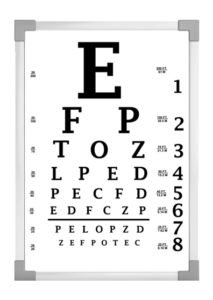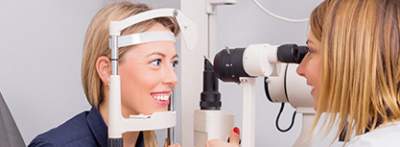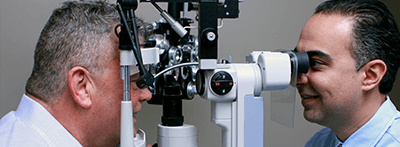
Unless the patient is at risk, an eye exam should occur every two years for adults 18-60, and annually for those 61 and older or those wearing eyeglasses or contacts. For children birth to 24 months, the exam should occur at six months of age; from 2 to 5 years at age 3, and from 6 to 18, before first grade and every two years thereafter. And if wearing eyeglasses or contacts, annually. In Texas, when an optometrist eye doctor writes a visual or contact lens prescription, this is valid for one year. An eye exam is not the same as a contact lens exam although certain tests may be similar.

Adult Exams
Adults who wear contact lenses should have annual eye exams, says the American Optometric Association (AOA). “At risk” adults also should have more frequent eye exams. Some of these risk factors include: a family history of eye disease (glaucoma, macular degeneration, etc.), diabetes or high blood pressure, a visually demanding occupation or one that poses hazards to the eyes, taking prescription or non-prescription drugs that may have visual or eye-related side effects, and previous eye injuries or eye surgery.

Pediatric Exams
Routine eye exams are critical for children to be prepared to learn in school. Some experts believe more than 80 percent of information children receive in classrooms is presented visually. Children with risk factors for vision problems may need their first eye exam earlier than six months of age and more frequently through their childhood. Some of these risk factors include: history of premature birth or low birth weight, infection of mother during pregnancy (example: rubella), developmental delays such as strabismus (turned or crossed eyes); family history of eye disease, anisometropia (eyes with different refractive powers), and other disease or physical illness.

What happens in an eye exam?
Your Today’s Vision optometrist will determine which tests are appropriate for your eye exam. Some of these include: color blindness test, cover test for eye alignment, ocular motility (eye movement) test, depth perception test, retinoscopy (doctor shining light on retina), phoropter refraction (example: what is better 1 or 2?), autorefractor or aberrometer testing; slit lamp exam (to view the structures of the eyes), visual field test (to determine blind spots), and glaucoma testing. Your doctor may need to dilate your eyes. Typically, a contact lens fitting is not included in an eye exam.
Everyone needs regular eye exams. It’s important for adults to schedule eye exams to monitor their eye health and check for problems. Conditions that are often detected during eye exams include glaucoma, macular degeneration, cataracts, and diabetic retinopathy. Early detection of these conditions allows for the widest range of treatment options and the best chance of slowing or reversing any symptoms.
While children often get their scheduled exams during pediatrician visits, adults have to remember to make time for check ups. This is especially important for adults who have a family history of eye problems or have higher risk factors such as diabetes, high blood pressure, work conditions or medications. All adults should have their eyes examined every two years, and those with eye or vision issues should visit their optometrist yearly or bi-yearly.

